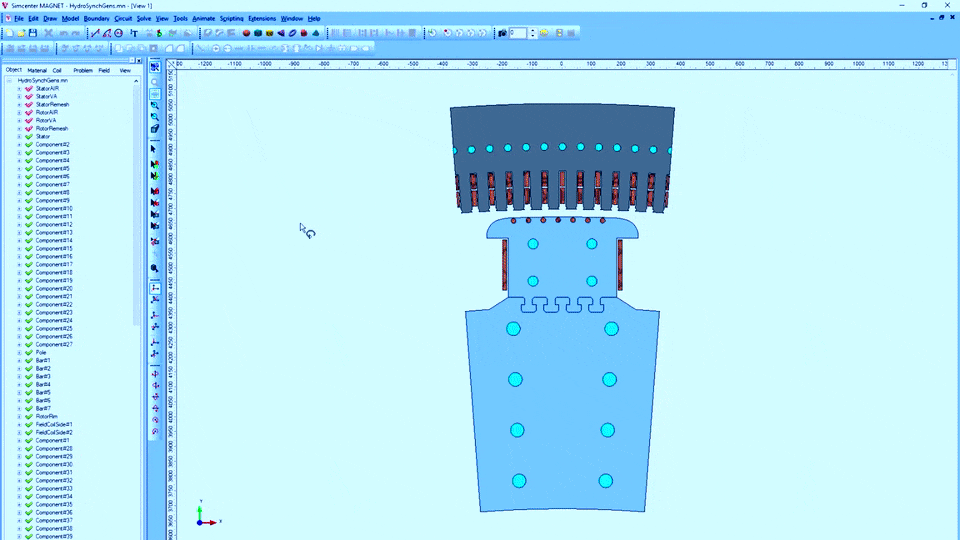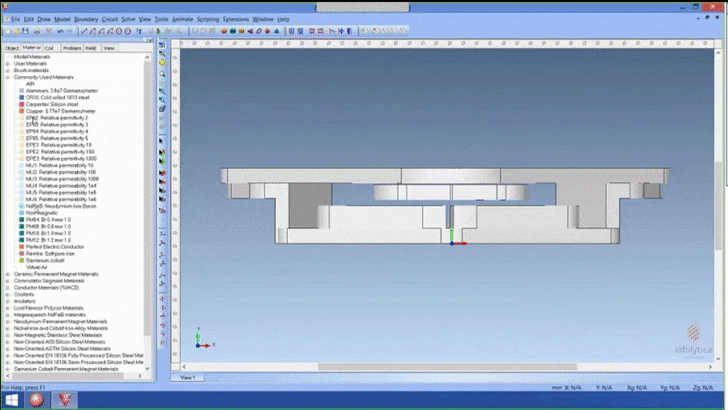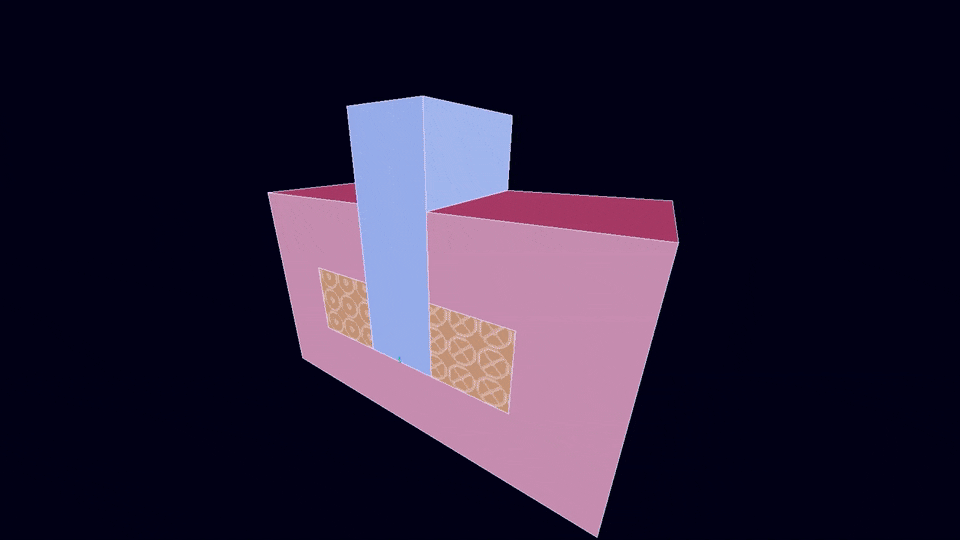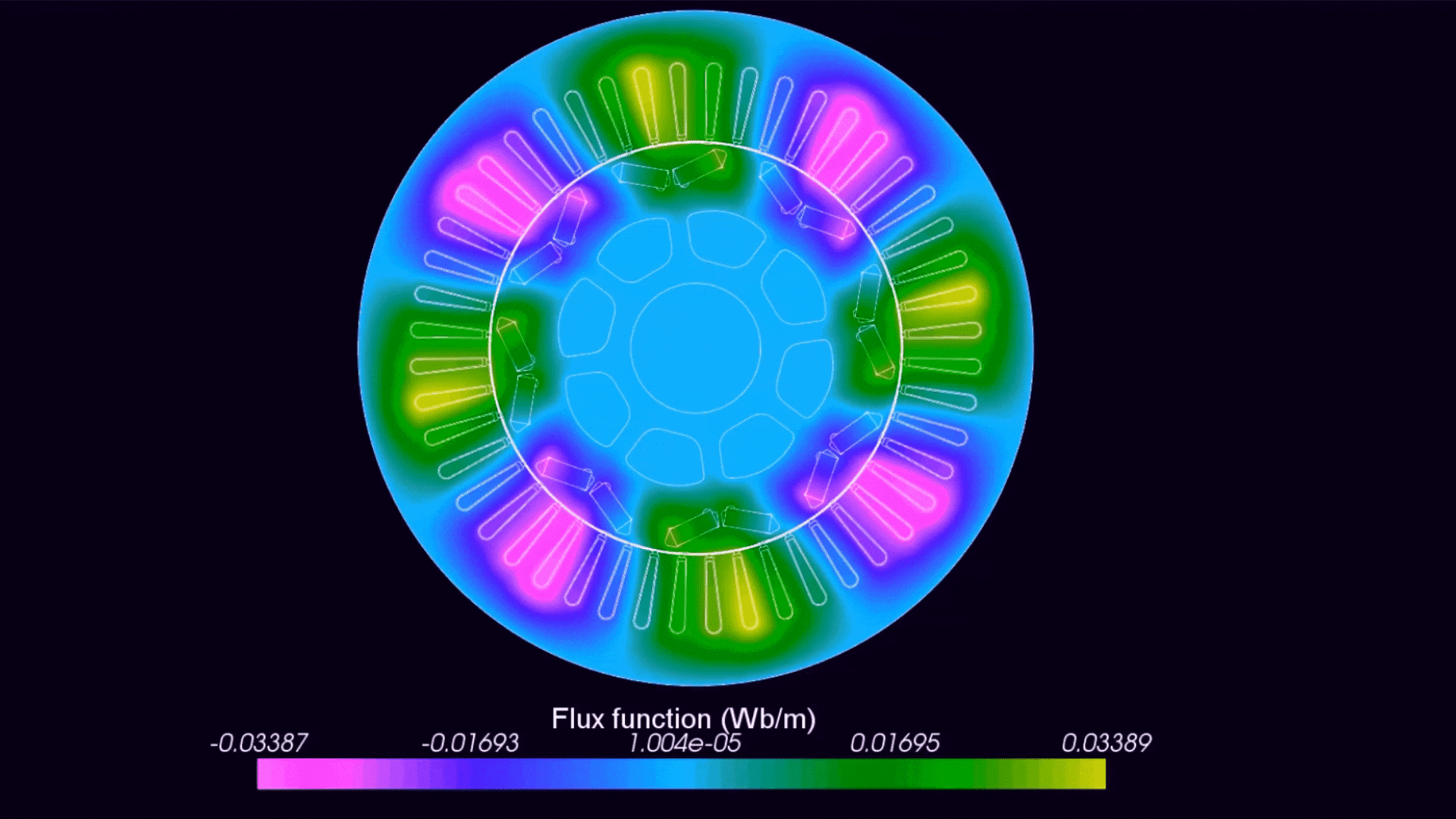
Simcenter MAGNET
Perform low frequency electromagnetic field simulations with Simcenter MAGNET 2D/3D Finite Element software , a powerful electromagnetic field simulation solution for predicting the performance of motors, generators, sensors, transformers, actuators, solenoids or any other electromagnetic device.
Simcenter MAGNET virtual prototyping is cost and time efficient. Parametric and optimization studies allow exploration of multiple configurations for performance improvements. Accurate replication of extreme operating conditions provides insight into loss and temperature hotspots , permanent magnet degaussing, unused material and failure analysis.







AC Electromagnetic Simulation
Advanced Modeling of Electromagnetic Materials
Effects of incorporating hysteresis in the simulation of electromagnetic devices
Modeling of circuits and systems
Electric Field Simulations
Simulation of Electromagnetic Motion
Transient electromagnetic simulation
AC electromagnetic simulations are based on a single frequency, which reduces simulation time. With this approach, you can simulate electromagnetic fields in and around conductors, in the presence of isotropic materials that can be conductive, magnetic, or both. This takes into account displacement currents, eddy currents and proximity effects, which are important in hotspot analysis .
The accuracy of low-frequency electromagnetic simulations is highly dependent on material data. Simcenter's modeling of advanced electromagnetic materials takes into account non-linearities, temperature dependencies, demagnetization of permanent magnets, loss of hysteresis and anisotropic effects. This makes it possible to analyze effects such as demagnetization on permanent magnets to check their lifetime, analyze frequency-dependent losses in thin parts while reducing solution time, and account for all losses for an accurate energy balance.
Hysteresis modeling in Simcenter MAGNET software allows engineers and scientists to model a real-world scenario, incorporating the effects of iron losses in the simulation of low-frequency electromagnetic waves. Accurate representation of a ferromagnetic material by the complete BH loop , rather than the BH curve, affects local quantities.
System-level or model-based analysis requires accurate sub-component models to account for local interactions and transients that affect the overall behavior of the system.
Simcenter's low-frequency electromagnetism includes features such as native circuit simulations, connections for co-simulation, and export of 1D system models to Simcenter Flomaster, Simcenter Amesim, and other platforms.
Finite element method for electric fields can be used to simulate static electric fields, ac electric fields and transient electric fields. It can also simulate the current flow (which is the static current density) produced by DC voltages on electrodes in contact with conductive materials.
Electric field simulations are typically used for high voltage applications to predict insulation and winding failures, lightning impulse simulations, partial discharge analysis, and impedance analysis.
Electromagnetic simulation of transient fields can include motion. It is possible to simulate rotational, linear and arbitrary movements with six degrees of freedom (X, Y, Z, Roll , Pitch and Yaw) for an unlimited number of moving components. Mechanical effects include viscous friction, inertia, mass, springs, and gravitation, as well as motion restrictions imposed by mechanical stops. Arbitrary loading forces can be specified as a function of position, velocity and time. Currents induced due to motion are taken into account.
Allows the simulation of complex problems involving sources and outputs of current or voltage in an arbitrary, time-varying manner with non-linearity in materials and frequency-dependent effects. This includes oscillations in electromechanical devices, demagnetization in permanent magnets, switching effects, eddy current induced torque, skin and proximity effects.